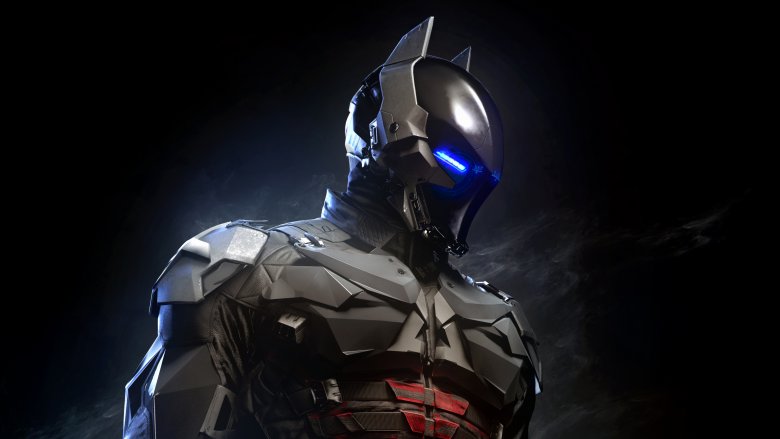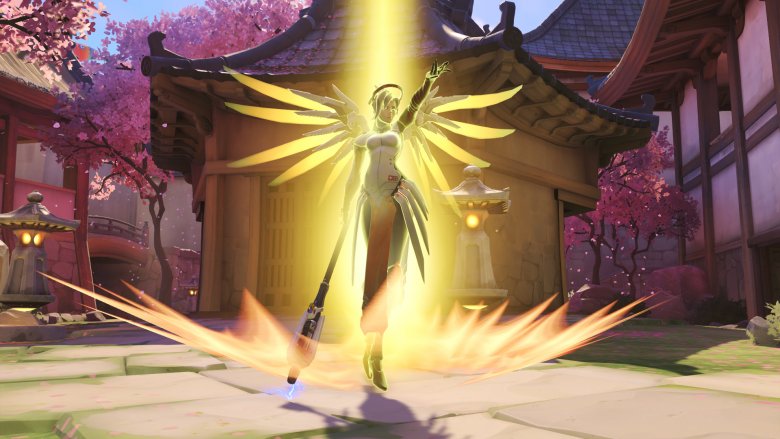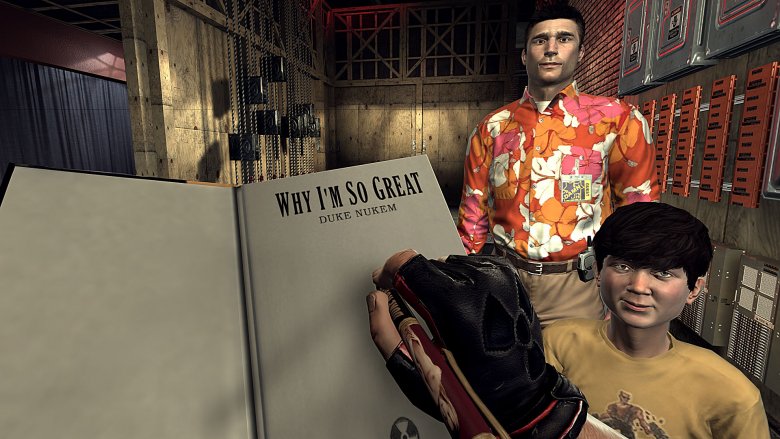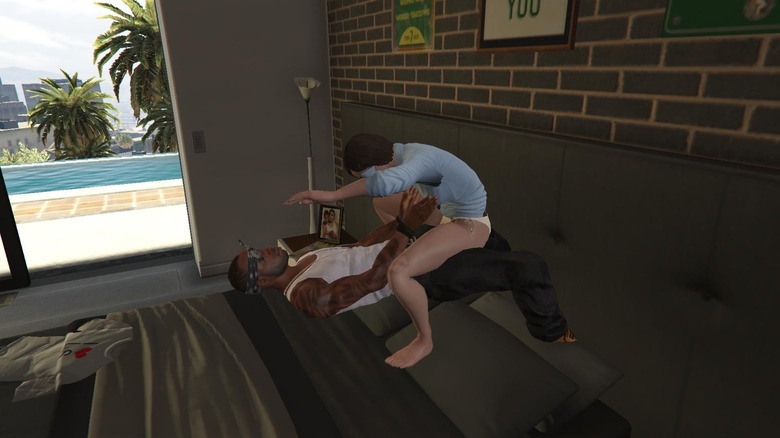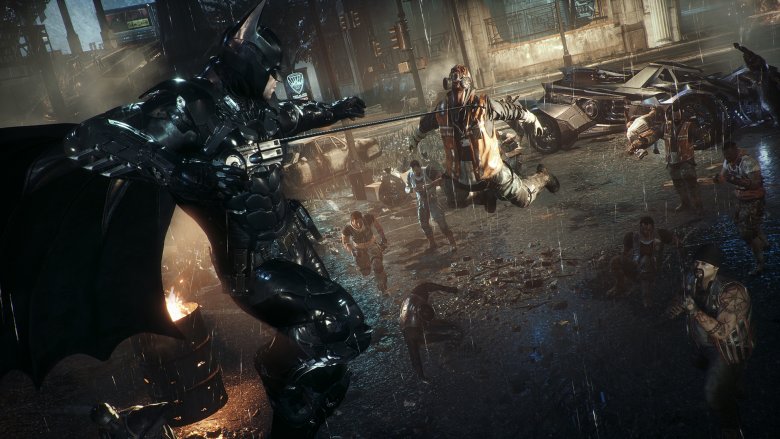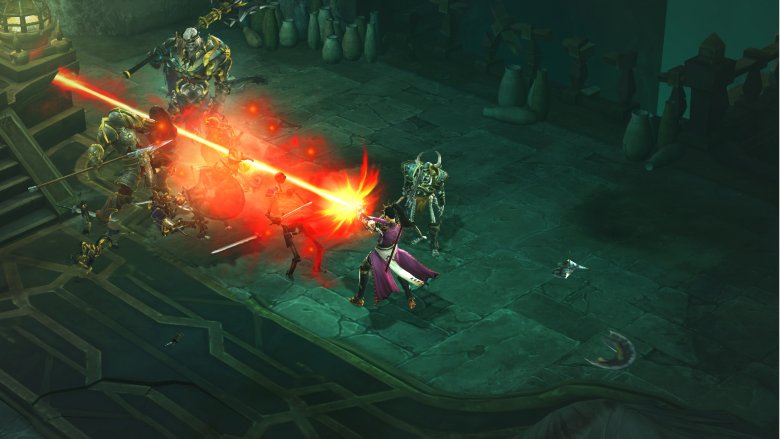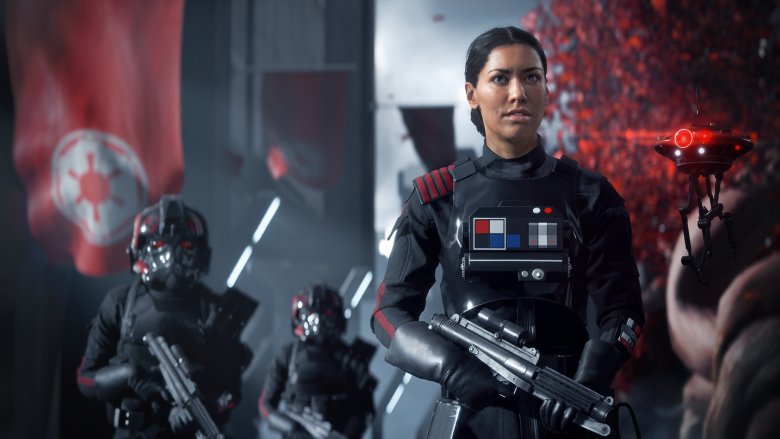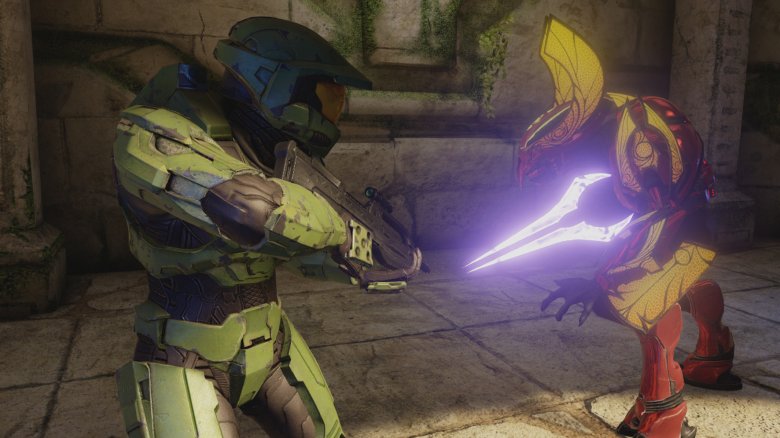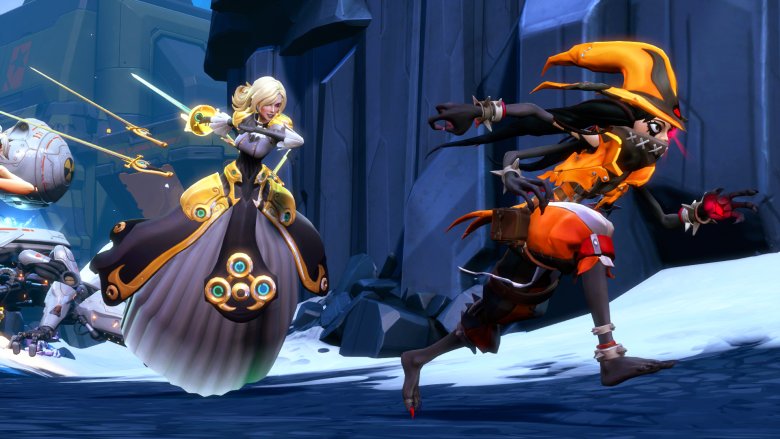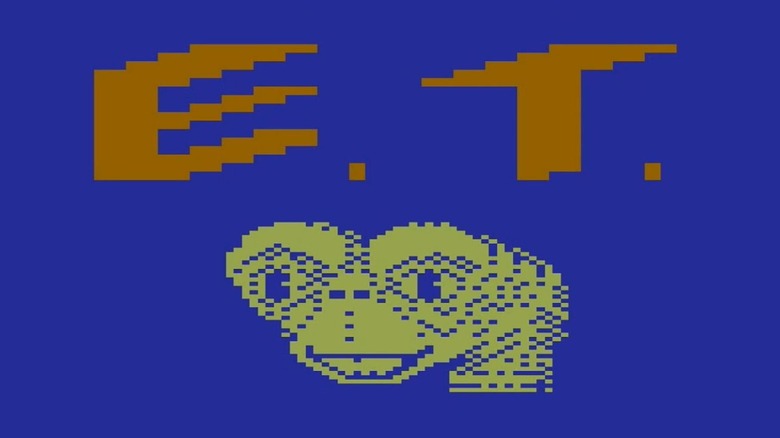Mistakes That Cost Developers A Ton Of Money
Any creative process is a long, difficult struggle. Grand ambitions run into a meat grinder of budget, time, and contrasting opinions, to say nothing of corporate oversight. Development itself is often an iterative process, in which ideas are tried and the refined or discarded. While this can result in anything from a mediocre product to a classic masterpiece, the process can often feel bruising to the people caught inside. A lot of effort can end up going nowhere at all.
But in the gaming industry, some mistakes are a lot more painful than others. These are the ones where the game's makers should have known better. Whether a troubled idea was adhered to for just too long, or expectations were simply unreasonable, or the game just didn't actually work, these are the issues that can sink a developer's reputation –- or even the developer itself. Here are ten mistakes that cost game studios a ton of money.
Blizzard tries to make an MMO, which is an FPS, and also a Sims clone
You might say that Blizzard Entertainment's World of Warcraft was successful if, you know, you consider being one of the highest-grossing games of all time "successful." The MMO has been running for well over a decade now, bringing millions of players together and providing countless hours of questing, battling, and looting.
So it shouldn't come as a surprise that Blizzard thought that they might be good at this whole MMO thing. And that maybe they should do it again. And so, flush with cash and talent to spare, the Irvine, CA-based studio got to work on their next blockbuster, codenamed Titan. It sure didn't lack for ambition. Not only would the game bring millions of players together (again), but it would pull from two wildly different inspirations: The Sims on the one hand, and the FPS genre on the other. As Kotaku reports, the general idea was that the game would have two distinct sections, one for performing a fun if ordinary day job, and another for being a mighty superhero.
And it just never worked. Despite having some of the best designers in the industry, Blizzard simply never found a way to make Titan a good game. After seven agonizing years, the company pulled the plug. It's one thing if a game idea doesn't work out, but sticking with it for such a long time only to can it is a bad mistake that Blizzard probably should have known better than to fall into.
Of course, it wasn't all bad news: parts of Titan (specifically, the FPS bits) were salvaged and re-engineered into Overwatch, which you might say has been successful too.
Duke Nukem Forever will be the perfect game, someday, really
In 1996, Duke Nukem 3D was a smash hit, a sterling example of the budding FPS genre filled with a personality all its own. So naturally, developer 3D Realms wanted to make a sequel. Fine! The project would be called Duke Nukem Forever, and boy, was that title more appropriate than they ever realized.
3D Realms determined that the new game would have to be absolutely perfect, the very best FPS title on the market. Thing was, though, the industry was continuing to innovate and evolve, and 3D Realms found itself falling behind. They switched engines several times, trying to keep up with the latest graphics. And every time a Halo or a Half-Life came out and reset the goalpost, 3D Realms would have to go chasing after it.
In the end, Forever took forever, and forever was too long. By 2009, the studio was out of cash and its publisher was fed up. 3D Realms went out of business, and Duke Nukem disappeared ... until he came back and actually finished the job under developer Gearbox Software. It was too little, too late, though, and Duke Nukem Forever bombed.
If 3D Realms had just tried to make a good game, instead of a perfect one, the game probably would have sold fine and the company would still be in business.
Grand Theft Auto's coffee was too hot
There's a lot of violence in video games. You can shoot people, slash at people, invade their countries with entire armies, or, if you prefer, just have your eyeball drilled into (don't click that link if you don't have to!). And for the most part, as a society, we're fine with it. There's a ratings system to help parents gauge what's appropriate, and gaming violence has become an accepted part of modern life.
But you know what's absolutely inexcusable? Sex. In a video game. Can you imagine that would do to our world if it ever came to pass?
Uh, we can't think of anything, either. But that's no reason not to cause a controversy! And so when it was discovered that it was possible to unearth a cancelled sex mini-game buried deep within the code of Grand Theft Auto: San Andreas, people went nuts. The mod needed to surface this sexual content was called "Hot Coffee." To repeat, this mini-game had actually been cut: it was just left in the code as an oversight. That mistake ended up costing developer Rockstar's parent company Take-Two $20 million in a class-action lawsuit. That is one expensive cup of coffee.
Fortunately, our children are now safe from the threat of seeing a man and a woman love one another, so they can go right back to murdering people on the digital streets without fear. Thank goodness.
Batman can't save the day if he doesn't work
There are certain things that we, as consumers, expect from video games. One of them is that the game will actually work. But that was just too much to ask of Batman: Arkham Knight.
Now, the Arkham series of Batman games are very well-loved, and Arkham Knight is a fine example of adapting the caped crusader for the medium. So what's the issue? Well, the game was original designed for consoles. Fair enough. But when it was later ported to the PC, everything went wrong. Between unacceptable framerate stutters to glitches that just broke the game, it was a plain fiasco, pure and simple.
In the end, Warner Bros. Interactive Entertainment pulled the title from store shelves and Steam, and even offered a refund to enraged fans. That's a lot of money down the drain. If WBIE had simply, you know, made a functioning product, they might have actually made money. Not doing so was a pretty bad mistake, really.
Diablo III made a ton of money. That was the mistake.
Diablo III was a deeply problematic game at launch. First, there was the infamous Error 37, which meant that many players couldn't connect to Blizzard's servers (and thus play the game, even in single-player). Then there were the issues with the difficulty modes, which were eventually reworked from the conceptual level. But biggest and worst of all was the Auction House, an in-game system in which players could trade loot, either for in-game currency or real-world money.
Here's the problem: the entire point of playing Diablo, other than slaying monsters with cool abilities, is to earn new loot. So if you can just get that loot by paying enough money, what's the point of actually playing? The entire purpose of the game was thrown out of whack, and Diablo III and its community suffered.
To save their reputation, Blizzard was forced to remove the Auction House altogether, admitting it was a mistake to have ever included it in the first place. That's an expensive mistake, though: Blizzard took a cut of every real-money transaction. Blizzard was choosing to give up on a solid revenue stream just to preserve their good name. Which is basically why Blizzard has such a good name, for 20 years and counting.
If you guessed Battlefront II loot boxes would be on this list, you were right
Franchises don't get any bigger than Star Wars, so when Electronic Arts picked up the rights to publish video games based on the property, they expected to rake in the profits. EA wasn't kidding around, either: they gave the signature AAA releases to one of their very best studios, Battlefield creator DICE.
While their first effort, 2015's Star Wars: Battlefront, ended up a little less great than hoped for, EA learned their lesson for the sequel. Battlefront II would have more modes, more maps, more heroes, and a full-fledged narrative campaign. Oh, and one more thing: loot boxes! It would have loot boxes! Everybody loves loot boxes, right?
Right?
Wrong. The game became the lightning rod for the loot crate backlash that swept the industry in 2017, and sales suffered horribly as a result. The irony here is that the whole point of adding loot crates was so EA could make more money. Fair enough: they are a business, after all. But if your new revenue model is so reviled that nobody buys the game in the first place, there's no money to be made, is there? EA eventually pulled paid loot crates from the game altogether, but by then, the damage had already been done.
If EA had either handled loot crates better or not used them at all, Battlefront II might have been an enormous success.
This collection was not worthy of the Master Chief
The Master Chief is one of gaming's most legendary heroes. Protagonist of the seminal Halo franchise, he has traversed the very stars, saved humankind multiple times, and shot many enemies in the face. So when Microsoft decided to bring these hugely influential games into the modern era with a remastered collection, they decided to name it after its central character, and Halo: The Master Chief Collection arrived in November of 2014.
Or maybe it's fair to say that the collection has yet to be released, because in point of fact, it still doesn't work even years later. For a host of complex technical reasons, the multiplayer components of these games — which defined not only the series, but the entire industry, for years — have simply never operated correctly. It's nearly impossible to actually get into, and then complete, a match. Needless to say, the whole collection has an awful reputation.
Microsoft has never released sales figures for The Master Chief Collection, which in itself is an indication of a poor performance. Really, the lesson here should have been obvious from the start: don't release something if it doesn't work. Better to not release it at all than get hit with this kind of embarrassment.
Battleborn was born right next to Overwatch
Gearbox Software struck on a hit combination of humor, gameplay, and personality with their Borderlands series of games. Gearbox decided to cross those sensibilities with some inspirations from the red-hot moba genre, resulting in Battleborn in May of 2016. In Battleborn, the player would select from a vibrant roster of distinct heroes, each with their own abilities and drawbacks. Grouped into teams, the players would have to work together strategically in order to prevail in fast-paced multiplayer matches. Sounds fun! What could go wrong?
Enter Blizzard Entertainment, the scariest two words in the entire industry (at least, to everyone else in the industry). They also released a game in May of 2016. In Overwatch, the player would select from a vibrant roster of distinct heroes, each with their own abilities and drawbacks. Grouped into teams, the players would have to work together strategically in order to ... wait ... this sounds very familiar ...
Battleborn isn't necessarily a terrible game on its own merits, but positioning the release of a product is critical. When two games that are very similar come out right on top of one another, the better of the two is going to suck all the oxygen away from the other. This is especially true of multiplayer games, in which a customer is going to buy the game his or her friends are already playing. Which was Overwatch, not Battleborn.
If Gearbox had released the game in a different window, it might have had some space to breathe. Choosing to stick to a May 2016 launch was pure insanity.
SimCity forgot to build any servers
Electronic Arts decided to bring back SimCity for the modern era in 2013. Great idea! SimCity was a legendary series in its time, and its blend of compelling visuals and deep strategic management could work just as well today as it did then. But for some reason, EA decided to throw in a requirement that the game be connected to EA's servers — all the time. Even if the player was just building cities alone.
People worried this might lead to some problems; EA assured them it wouldn't. Of course, it did. The game suffered from crippling server connection issues, eventually getting so bad that paying customers around the world were unable to play. EA's already fragile reputation was hammered anew, and public opinion on SimCity soured fast.
A year later, EA finally removed the server-connection requirement, which begged the question of why it had even been included in the first place. By then, the damage had been done: no SimCity sequel is on the horizon, which is a sign of poor sales. If EA had just let the game be playable offline from the start, perhaps they'd be building a whole new franchise right now.
The most famous mistake of them all
In 1982, the gaming business was still in its infancy. What was the best way to drum up interest in the burgeoning medium? Which games did consumers prefer? Did hardware drive software sales, or vice versa? Everyone was still figuring it all out. Mistakes were made in this era, but that's the nature of any new frontier.
Then again, certain mistakes should just never be made, by anybody, under any circumstances. But when it came to E.T.: The Extra-Terrestrial, the biggest movie of 1982, developer and publisher Atari quite simply lost their heads. They snapped up the video game rights to the movie for an astonishing $22 million, then asked a single programmer to whip up a game in just five weeks, then produced an eye-popping four million cartridges in the initial run.
Four. Million. Cartridges.
Even today, a game that sold four million copies would be considered a success. But back in 1982, the total population of gamers was much smaller, and selling four million cartridges would be a record-setting achievement. Sure, E.T. was a hot IP at the moment, but according to some rumors, there ended up being more cartridges than there were working Atari 2600 consoles to play it on. It was just insane.
And it sunk the company. Atari went out of business not long after, losing hundreds of millions on E.T. and other over-produced titles like Pac-Man. Which, frankly, was not undeserved, if they were making obvious — and colossal — mistakes like this.

